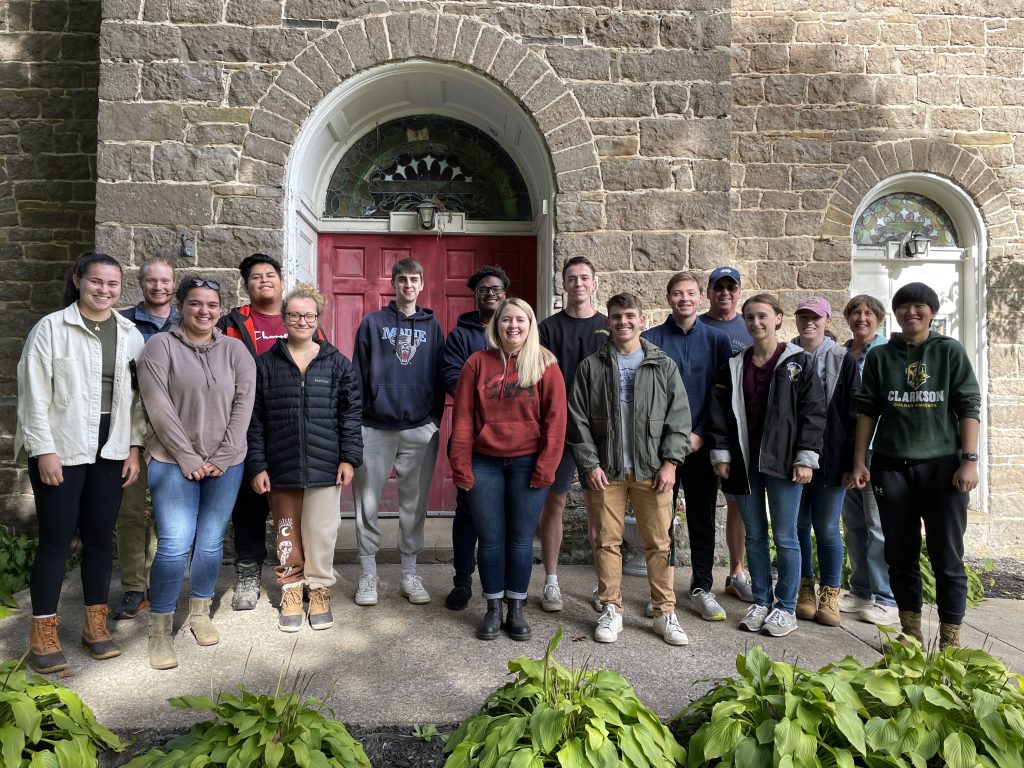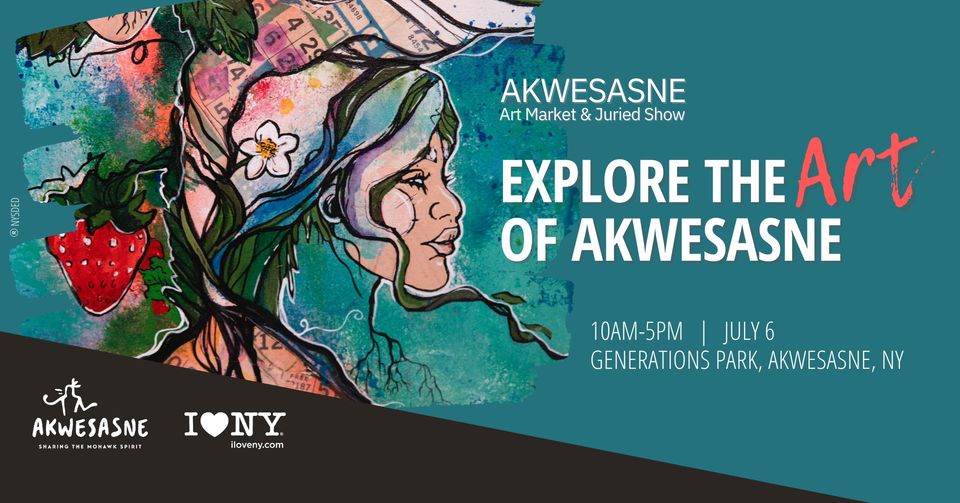Two classes of Clarkson University students are working together to preserve the history of the small St. Lawrence River village of Waddington, N.Y.

Fourteen Honors students taking the “HP200: Introduction to Community Engagement” class are working with Kathy Putney, the village historian, to organize the museum collections and develop a new walking tour of the village.
Students in the “CE448: Introduction to Architectural Engineering” class are designing a new museum building for the Village of Waddington on the corner of Lincoln Ave. and Fenton St.
The museum lot consists of the Episcopal church, the attached parsonage, and some vacant land. When the Episcopal church closed, the property was gifted to the Village of Waddington, which decided to use it for a new tourist destination next to the church – a village historical museum.
“The resources provided by Clarkson have been very valuable for the short-term operation and growth of the Waddington Museum as well as the long-term vision for a new museum within the village,” says Michael J. Zagrobelny, mayor of the Village of Waddington. “Clarkson’s Honors students have spent many hours preparing exhibits, cataloging holdings, and arranging museum space. Professor Backus’ students in the Construction Engineering Management Program have devoted a great deal of study to designing prototypes for a new Waddington museum.”
One team of Honors students is assisting with inventorying the vast array of artifacts and materials that the Waddington History Museum will preserve and display in their new building. The students are also offering their own ideas for some exhibits based on what they discover.
The other Honors team is expanding and digitizing the Waddington walking history map as well as updating the website, so visitors and locals can learn more about the historic sites throughout the scenic village.
“It’s been great to witness the enthusiasm, the knowledge and the understanding the students have had for all these projects,” says Village Historian Kathy Putney. “They are providing ways to share information about Waddington’s rich history with so many more people than we thought possible.”
“The website design primarily focused on visual appeal and accessibility along with the addition and updating of information through databases,” says George D. Crochiere ’25, a software engineering major. “The website helps tie together the entire group project of creating the walking tours both physically and digitally, allowing increased access to the maps as well.”
“Each Honors student is completing 20 hours of service toward these projects, learning more about the importance and the practical challenges of preserving local history, and connecting more with the North Country community,” says Honors Program Director Professor Kate Krueger. “Because Honors students come from a variety of majors, they’re able to take an interdisciplinary approach. For example, we have a software engineering major redesigning the website and a data science major handling artifacts.”
In preparation for their museum design, the CE448 students studied the history of Waddington and its founders, and the benefits that the museum could offer to both villagers and tourists.
The goal of the project is to renovate the church, demolish the attached parsonage, and, in its place, build a new museum that would highlight Waddington’s history and geography as a popular fishing area and attraction for travelers.
“The museum will provide information on the rich history of Waddington and also serve as a space for receptions and for residents to research their families’ history,” says project leader Emily Pecora ’24, a mechanical engineering major pursuing a minor in architectural & facilities engineering.
The students met with project representatives who highlighted the massive year-round presence of fishermen competing in tournaments and the outdoor enthusiasts from other states and countries who pass through the historic village.
“We have been amazed at the work they have put into developing ideas and details for the building and we feel it’s such a win-win situation for both our community and the Clarkson students as we will have developed ideas to present to the village board and community residents,” says Putney.
The engineering students conducted a site visit to study the available space and pre-existing conditions. They have outlined floor plan ideas, completed a site analysis, completed a load assessment system, and analyzed materials for the building envelope, taking into consideration windows and moisture control. They are now looking at mechanical, electrical, and plumbing systems, while working with Putney and village residents to ensure the project meets their expectations.
“Waddington benefits from having students at the cutting edge of building trends, environmental concerns, and best practices for construction of a new sustainable building that will be a highlight of the area,” says Zagrobelny.
Alyssa Dumblewski ’23 and Forrest Gifford ’23, both environmental engineering students, who are completing their capstone design project alongside the CE448 students, worked on an environmental assessment of the parsonage building. The two completed a Phase One Environmental Assessment and 6 NYCRR Part 617 State Environmental Quality Review (SEQR) to identify any contaminants of concern and comply with New York State Department of Environmental Conservation requirements.
“This has been an excellent opportunity to apply the skills that we have gained as environmental engineering undergrads to a real-world example,” says Dumblewski. “The SEQR and Phase 1 ESA are documents that we will encounter for the rest of our lives.”
“The opportunity to use the Waddington Museum project as the centerpiece of our introduction to architectural engineering course creates a proverbial win-win-win,” says Professor of Practice of Civil & Environmental Engineering Erik C. Backus, the Howard E. Lechler Endowed Director of the Construction Engineering Management Program. “The students get to learn by doing, the community gets several conceptual designs for their future public facility, and we can have a project that meets curricular objectives to team the next generation of engineers.”
Backus says that the design of the museum will continue into the next semester where a more fleshed-out version will be developed as part of the civil engineering capstone course.
“This capstone project is unique because our environmental engineering team is collaborating with a team of dedicated architectural engineering students who are completing the design portion,” says Dumblewski. “I have learned that architects and engineers really do rely on each other in the workforce, and each plays a critical role in the building design process.”
Waddington also partnered with Clarkson in the past for sponsorship of the Bassmaster Collegiate National Championships in 2019 and a tour location in 2021.
“It is my hope that the students gain more than just field experience from their work with Waddington,” says Zagrobelny. “The students have been exposed to the limitations of municipalities in a rural area and the sense of volunteerism and community service that makes Waddington such a great place to live. I look forward to the finished projects of the students and additional opportunities for collaboration.”
https://www.clarkson.edu/news/clarkson-university-students-preserving-waddington-history

